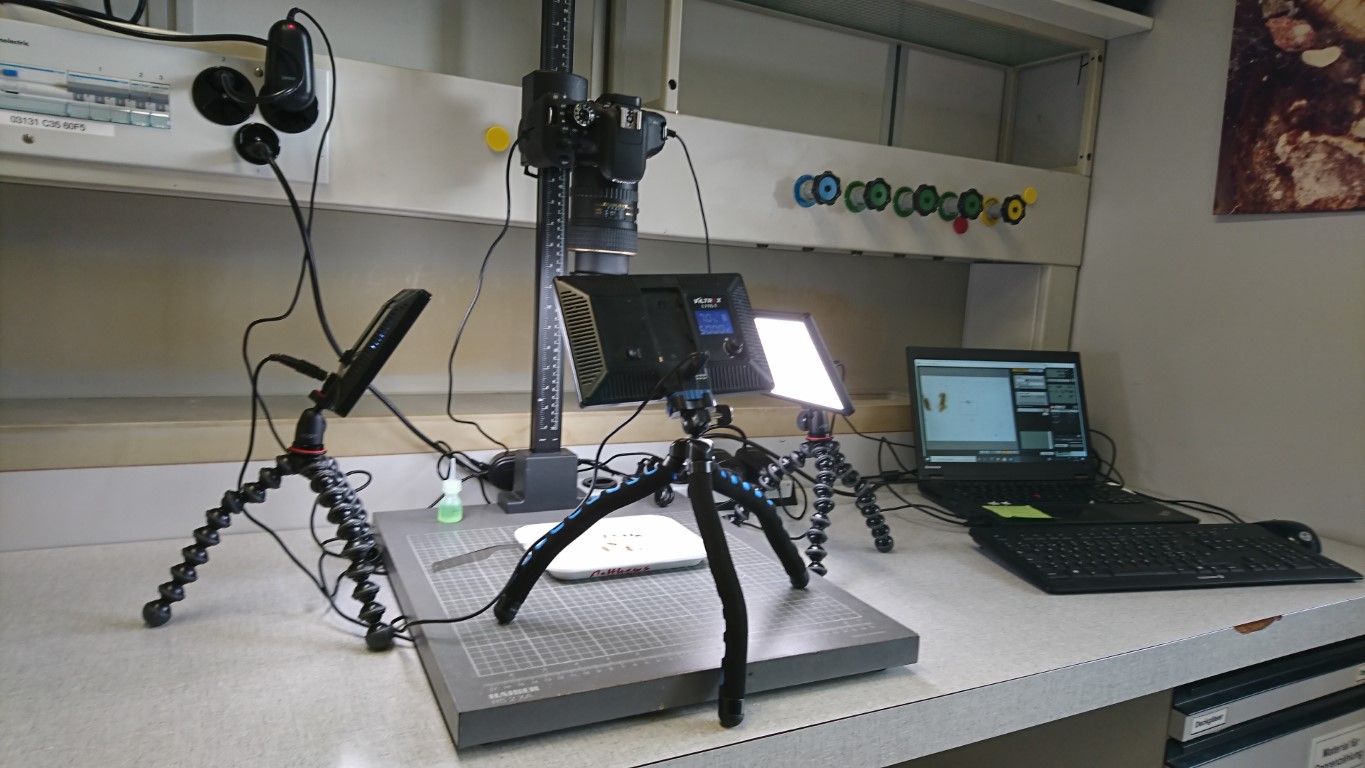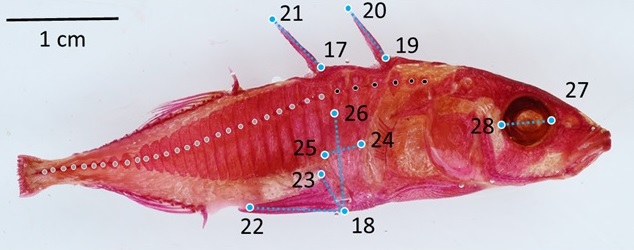Stickleback landmarks#
In this project, phenopype is used to place morphometric landmarks across the anterior half of threespine stickleback stained with alizarin red.

Get started#
Read the jupyter notebooks for this project
Download the materials (see downloads section below)
Run the project yourself (see general instructions)
Background#
Functional morphology of organisms is often measured by placing landmarks at specific points that show structural, functional or developmental significance. Lake and stream ecotypes of threespine stickleback differ in their morphology: lake stickleback posess elongated spines and a set of tall bony lateral plates that cover most of the body, whereas stream ecotypes have shorter spines and a reduced plate coverage - i.e., fewer and shorter plates, as reviewed in Hudson et al. (2021).

Details about the imaging gear and protocol can be found a blog entry on my personal website. We photographed the isopods on a camera stand using a computer controlled Canon EOS 750d DLSR with a 15-45mm lens and LED light panels for better illumination. Imaging each fish took about 30 seconds (including handling time), processing in phenopype up to 60 seconds per image.
Try with these instructions from Hudson et al. 2023 and see how long it takes you to annotate the three images in the data folder:

Landmark locations for lateral photographs of stained adult stickleback (see Table S1. in Hudson et al. 2023 for details)#
Jupyter notebooks#
Downloads#
Download data, scripts, and template